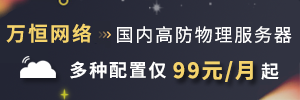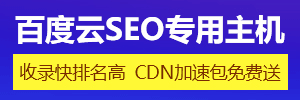5个JAVA入门必看的经典实例
更新时间:2017年10月18日 10:37:36 投稿:lijiao
这篇文章主要为大家详细介绍了5个JAVA入门必看的经典实例,具有一定的参考价值,感兴趣的小伙伴们可以参考一下

入门必看的5个JAVA经典实例,供大家参考,具体内容如下
1.一个饲养员给动物喂食物的例子体现JAVA中的面向对象思想,接口(抽象类)的用处
1 2 3 4 5 6 7 8 9 10 11 12 13 14 15 16 17 18 19 20 21 22 23 24 25 26 27 28 29 30 31 32 33 34 35 36 37 38 39 40 41 42 43 44 45 46 47 48 49 50 51 52 53 54 55 56 57 58 59 60 61 62 63 64 65 66 67 68 69 70 71 72 73 74 75 76 77 78 79 80 81 82 83 84 85 86 87 88 89 90 91 92 93 94 95 96 97 98 99 100 101 102 103 104 105 106 107 108 109 | package com.softeem.demo;/***@author leno*动物的接口*/interface Animal { public void eat(Food food);}/***@author leno*一种动物类:猫*/class Cat implements Animal { public void eat(Food food) { System.out.println("小猫吃" + food.getName()); }}/***@author leno*一种动物类:狗*/class Dog implements Animal { public void eat(Food food) { System.out.println("小狗啃" + food.getName()); }}/***@author leno*食物抽象类*/abstract class Food { protected String name; public String getName() { return name; } public void setName(String name) { this.name = name; }}/***@author leno*一种食物类:鱼*/class Fish extends Food { public Fish(String name) { this.name = name; }}/***@author leno*一种食物类:骨头*/class Bone extends Food { public Bone(String name) { this.name = name; }}/***@author leno*饲养员类**/class Feeder { /** *饲养员给某种动物喂某种食物 *@param animal *@param food */ public void feed(Animal animal, Food food) { animal.eat(food); }}/***@author leno*测试饲养员给动物喂食物*/public class TestFeeder { public static void main(String[] args) { Feeder feeder = new Feeder(); Animal animal = new Dog(); Food food = new Bone("肉骨头"); feeder.feed(animal, food); //给狗喂肉骨头 animal = new Cat(); food = new Fish("鱼"); feeder.feed(animal, food); //给猫喂鱼 }} |
2.做一个单子模式的类,只加载一次属性文件
1 2 3 4 5 6 7 8 9 10 11 12 13 14 15 16 17 18 19 20 21 22 23 24 25 26 27 28 29 30 31 32 33 34 35 36 37 38 39 40 41 42 43 44 45 46 47 48 49 | package com.softeem.demo;import java.io.FileInputStream;import java.io.FileNotFoundException;import java.io.IOException;import java.io.InputStream;import java.util.Properties;/*** @authorleno 单子模式,保证在整个应用期间只加载一次配置属性文件*/public class Singleton { private static Singleton instance; private static final String CONFIG_FILE_PATH = "E:\\config.properties"; private Properties config; private Singleton() { config = new Properties(); InputStream is; try { is = new FileInputStream(CONFIG_FILE_PATH); config.load(is); is.close(); } catch (FileNotFoundException e) { // TODO Auto-generated catch block e.printStackTrace(); } catch (IOException e) { // TODO Auto-generated catch block e.printStackTrace(); } } public static Singleton getInstance() { if (instance == null) { instance = new Singleton(); } return instance; } public Properties getConfig() { return config; } public void setConfig(Properties config) { this.config = config; }} |
3.用JAVA中的多线程示例银行取款问题
1 2 3 4 5 6 7 8 9 10 11 12 13 14 15 16 17 18 19 20 21 22 23 24 25 26 27 28 29 30 31 32 33 34 35 36 37 38 39 40 41 42 43 44 45 46 47 48 49 50 51 52 53 54 55 56 57 58 59 60 61 62 63 64 65 66 67 68 69 70 71 72 73 74 75 76 77 78 79 80 81 82 83 84 85 86 87 88 | package com.softeem.demo;/***@author leno*账户类*默认有余额,可以取款*/class Account { private float balance = 1000; public float getBalance() { return balance; } public void setBalance(float balance) { this.balance = balance; } /** *取款的方法需要同步 *@param money */ public synchronized void withdrawals(float money) { if (balance >= money) { System.out.println("被取走" + money + "元!"); try { Thread.sleep(1000); } catch (InterruptedException e) { // TODO Auto-generated catch block e.printStackTrace(); } balance -= money; } else { System.out.println("对不起,余额不足!"); } }}/***@author leno*银行卡*/class TestAccount1 extends Thread { private Account account; public TestAccount1(Account account) { this.account = account; } @Override public void run() { account.withdrawals(800); System.out.println("余额为:" + account.getBalance() + "元!"); }}/***@authorleno*存折*/class TestAccount2 extends Thread { private Account account; public TestAccount2(Account account) { this.account = account; } @Override public void run() { account.withdrawals(700); System.out.println("余额为:" + account.getBalance() + "元!"); }}public class Test { public static void main(String[] args) { Account account = new Account(); TestAccount1 testAccount1 = new TestAccount1(account); testAccount1.start(); TestAccount2 testAccount2 = new TestAccount2(account); testAccount2.start(); }} |
4.用JAVA中的多线程示例生产者和消费者问题
1 2 3 4 5 6 7 8 9 10 11 12 13 14 15 16 17 18 19 20 21 22 23 24 25 26 27 28 29 30 31 32 33 34 35 36 37 38 39 40 41 42 43 44 45 46 47 48 49 50 51 52 53 54 55 56 57 58 59 60 61 62 63 64 65 66 67 68 69 70 71 72 73 74 75 76 77 78 79 80 81 82 83 84 85 86 87 88 89 90 91 92 93 94 95 96 97 98 99 100 101 | package com.softeem.demo;class Producer implements Runnable { private SyncStack stack; public Producer(SyncStack stack) { this.stack = stack; } public void run() { for (int i = 0; i < stack.getProducts().length; i++) { String product = "产品" + i; stack.push(product); System.out.println("生产了: " + product); try { Thread.sleep(200); } catch (InterruptedException e) { e.printStackTrace(); } } }}class Consumer implements Runnable { private SyncStack stack; public Consumer(SyncStack stack) { this.stack = stack; } public void run() { for (int i = 0; i < stack.getProducts().length; i++) { String product = stack.pop(); System.out.println("消费了: " + product); try { Thread.sleep(1000); } catch (InterruptedException e) { e.printStackTrace(); } } }}class SyncStack { private String[] products = new String[10]; private int index; public synchronized void push(String product) { if (index == product.length()) { try { wait(); } catch (InterruptedException e) { // TODO Auto-generated catch block e.printStackTrace(); } } notify(); products[index] = product; index++; } public synchronized String pop() { if (index == 0) { try { wait(); } catch (InterruptedException e) { // TODO Auto-generated catch block e.printStackTrace(); } } notify(); index--; String product = products[index]; return product; } public String[] getProducts() { return products; }}public class TestProducerConsumer { public static void main(String[] args) { SyncStack stack = new SyncStack(); Producer p = new Producer(stack); Consumer c = new Consumer(stack); new Thread(p).start(); new Thread(c).start(); }} |
5.编程实现序列化的Student(sno,sname)对象在网络上的传输
1 2 3 4 5 6 7 8 9 10 11 12 13 14 15 16 17 18 19 20 21 22 23 24 25 26 27 28 29 30 31 32 33 34 35 36 37 38 39 40 41 42 43 44 45 46 47 48 49 50 51 52 53 54 55 56 57 58 59 60 61 62 63 64 65 66 67 68 69 70 71 72 73 74 75 76 77 78 79 80 81 82 83 84 85 86 87 88 89 90 91 92 93 94 95 96 97 98 99 100 101 102 | package com.softeem.demo;import java.io.IOException;import java.io.ObjectInputStream;import java.io.ObjectOutputStream;import java.io.Serializable;import java.net.ServerSocket;import java.net.Socket;class Student implements Serializable { private int sno; private String sname; public Student(int sno, String sname) { this.sno = sno; this.sname = sname; } public int getSno() { return sno; } public void setSno(int sno) { this.sno = sno; } public String getSname() { return sname; } public void setSname(String sname) { this.sname = sname; } @Override public String toString() { return "学号:" + sno + ";姓名:" + sname; }}class MyClient extends Thread { @Override public void run() { try { Socket s = new Socket("localhost", 9999); ObjectInputStream ois = new ObjectInputStream(s.getInputStream()); Student stu = (Student) ois.readObject(); String msg = "客户端程序收到服务器端程序传输过来的学生对象>> " + stu; System.out.println(msg); ois.close(); s.close(); } catch (IOException e) { // TODO Auto-generated catch block e.printStackTrace(); } catch (ClassNotFoundException e) { // TODO Auto-generated catch block e.printStackTrace(); } }}class MyServer extends Thread { @Override public void run() { try { ServerSocket ss = new ServerSocket(9999); Socket s = ss.accept(); ObjectOutputStream ops = new ObjectOutputStream(s.getOutputStream()); Student stu = new Student(1, "赵本山"); ops.writeObject(stu); ops.close(); s.close(); ss.close(); } catch (IOException e) { // TODO Auto-generated catch block e.printStackTrace(); } }}public class TestTransfer { public static void main(String[] args) { new MyServer().start(); new MyClient().start(); }} |
以上就是本文的全部内容,希望对大家的学习有所帮助,也希望大家多多支持脚本之家。

微信公众号搜索 “ 脚本之家 ” ,选择关注
程序猿的那些事、送书等活动等着你
相关文章

springboot使用DynamicDataSource动态切换数据源的实现过程
这篇文章主要给大家介绍了关于springboot使用DynamicDataSource动态切换数据源的实现过程,Spring Boot应用中可以配置多个数据源,并根据注解灵活指定当前使用的数据源,需要的朋友可以参考下2023-08-08
redis中存储list<map>,list<entity>的处理
本文主要介绍了redis中存储list<map>,list<entity>的处理,文中通过示例代码介绍的非常详细,对大家的学习或者工作具有一定的参考学习价值,需要的朋友们下面随着小编来一起学习学习吧2024-06-06
使用dubbo+zookeeper+spring boot构建服务的方法详解
这篇文章主要给大家介绍了关于如何使用dubbo+zookeeper+spring boot构建服务的相关资料,文中通过示例代码及图片介绍的非常详细,需要的朋友可以参考借鉴,下面随着小编来一起学习学习吧2018-05-05




































最新评论